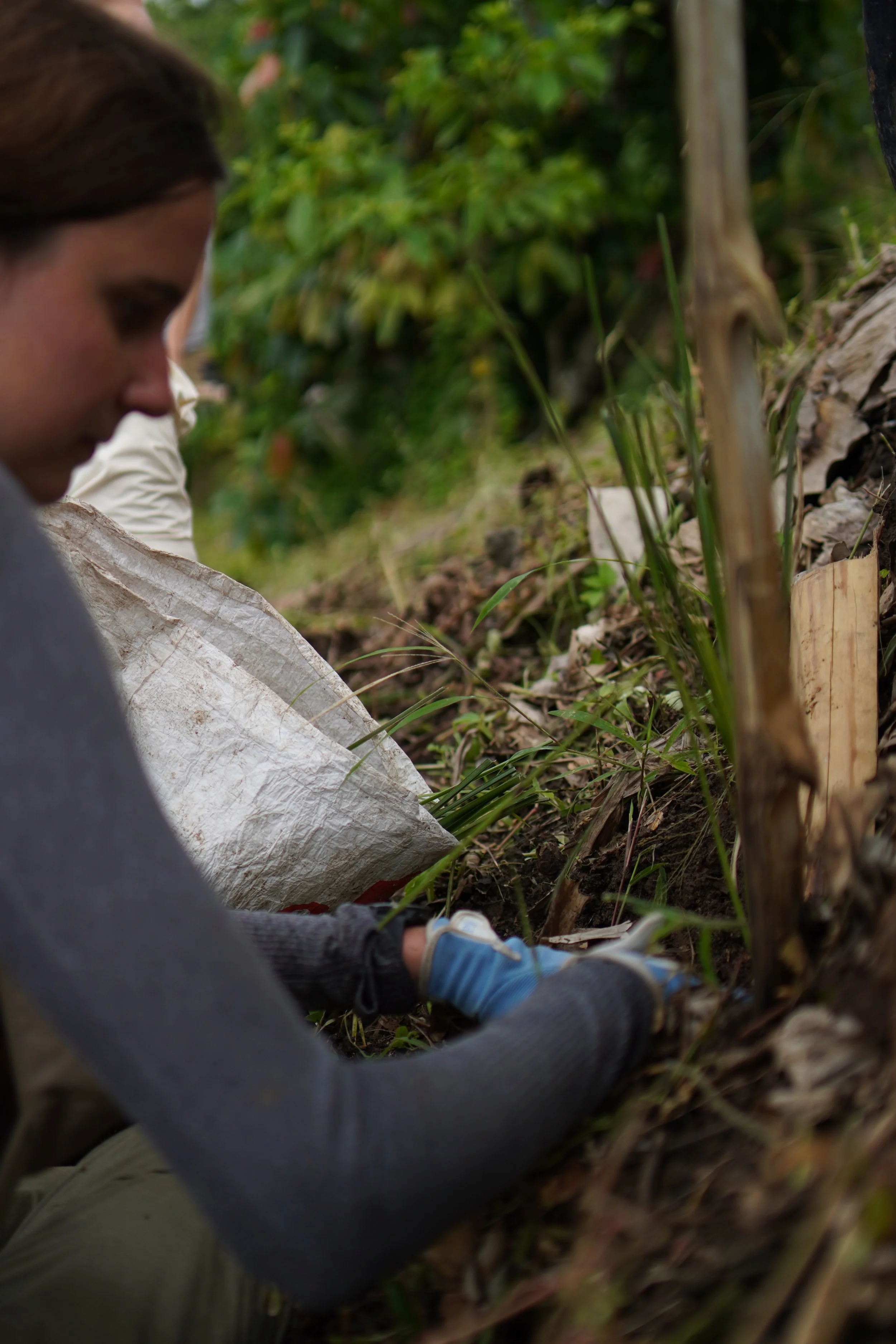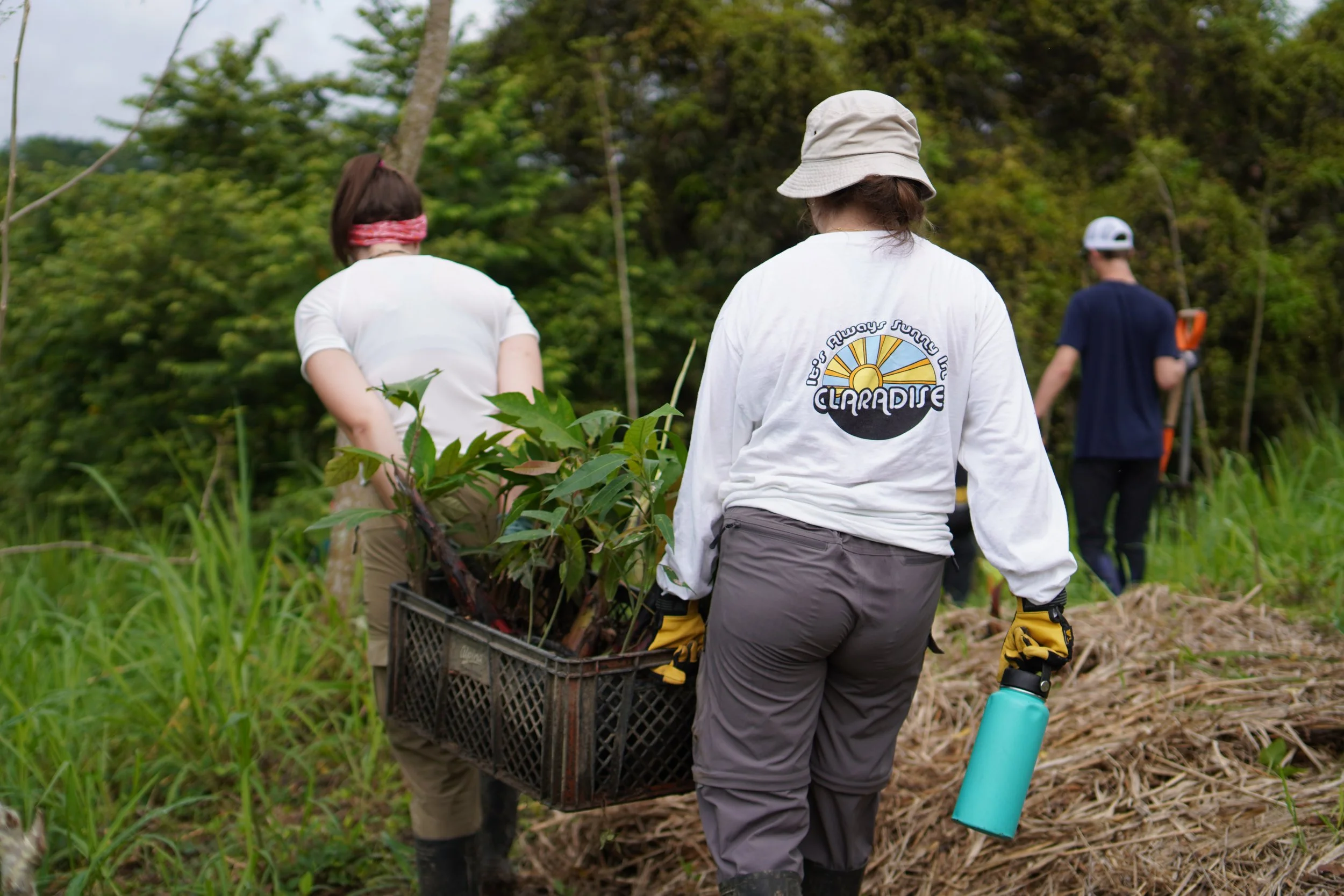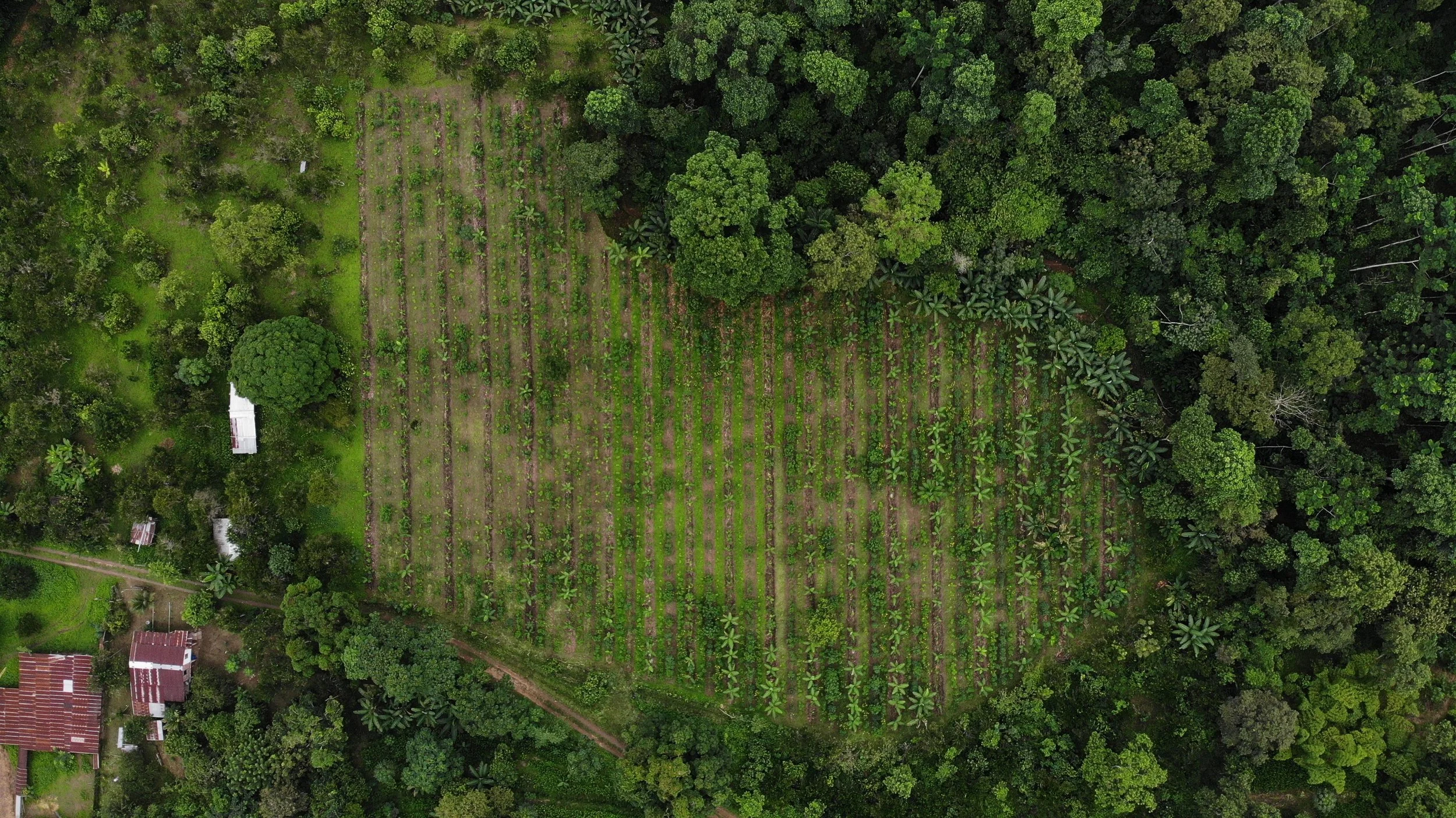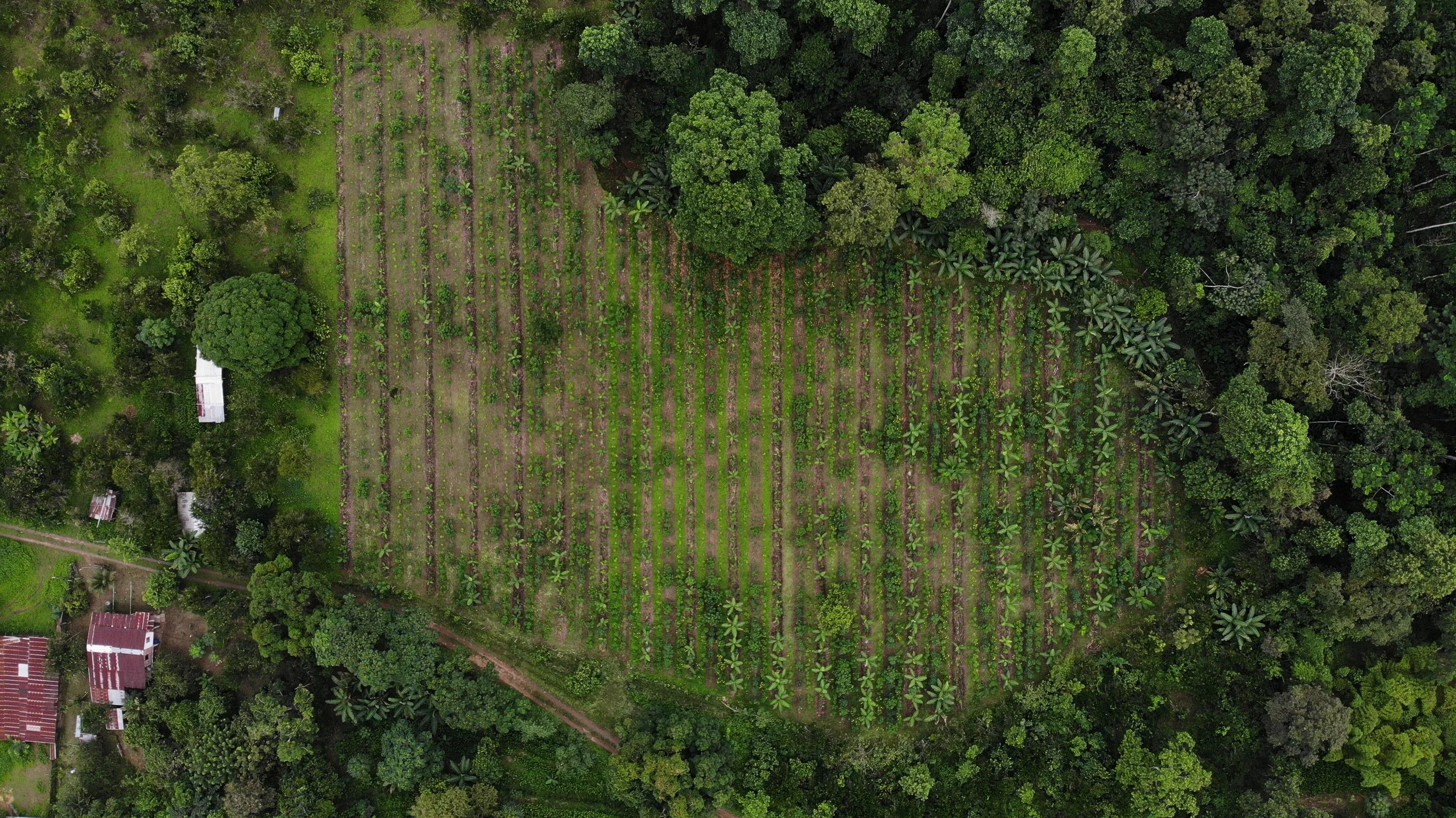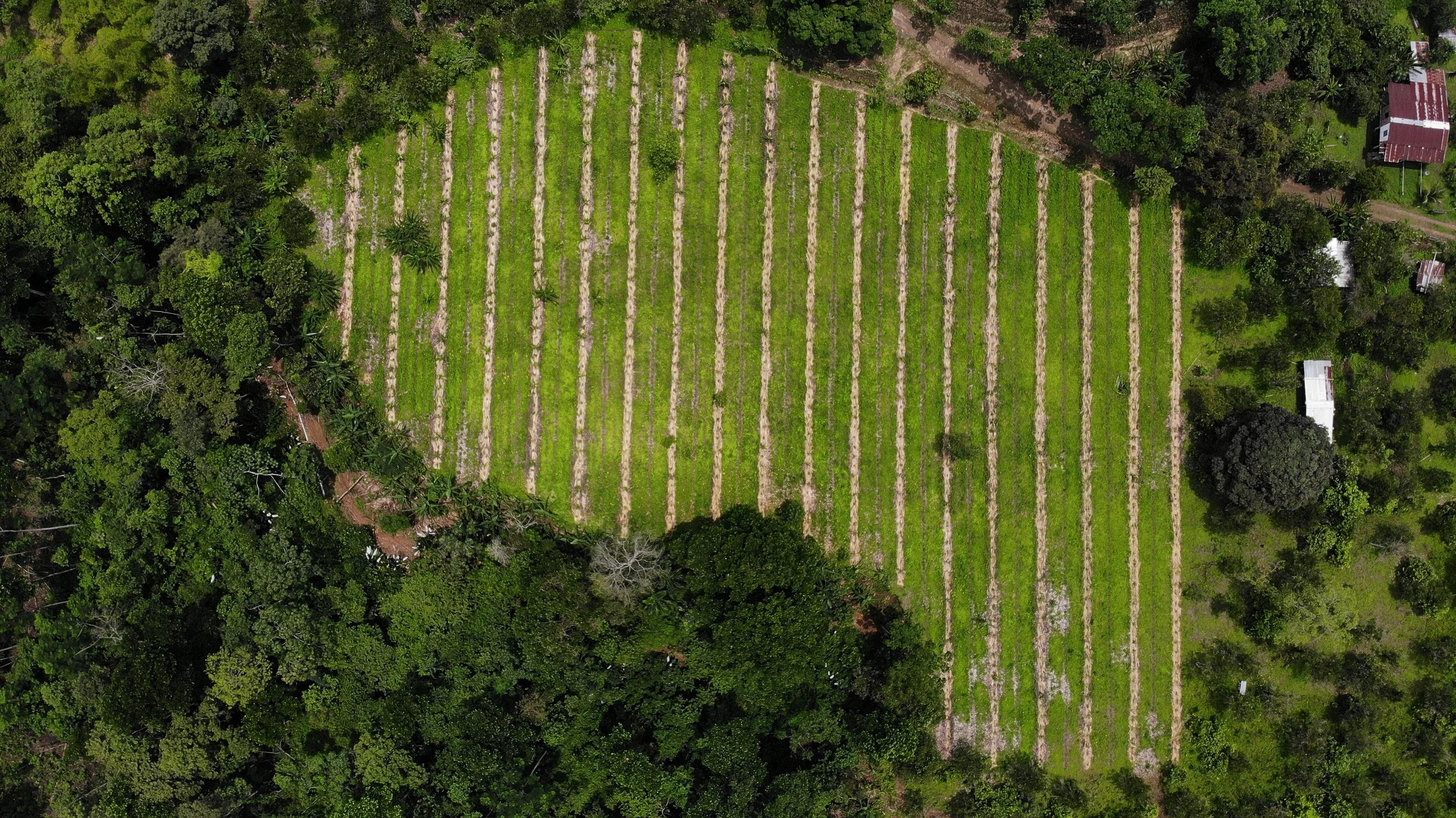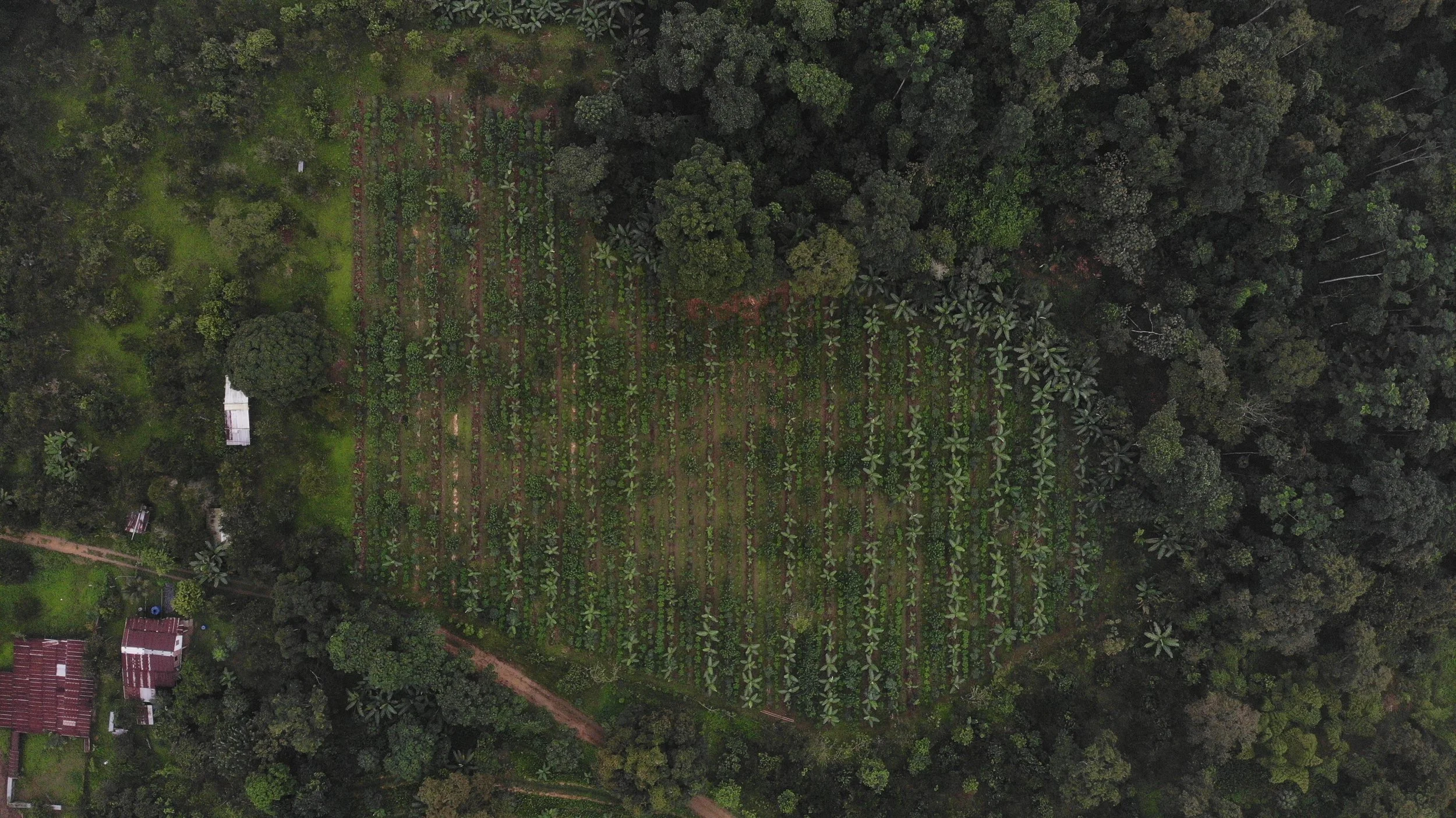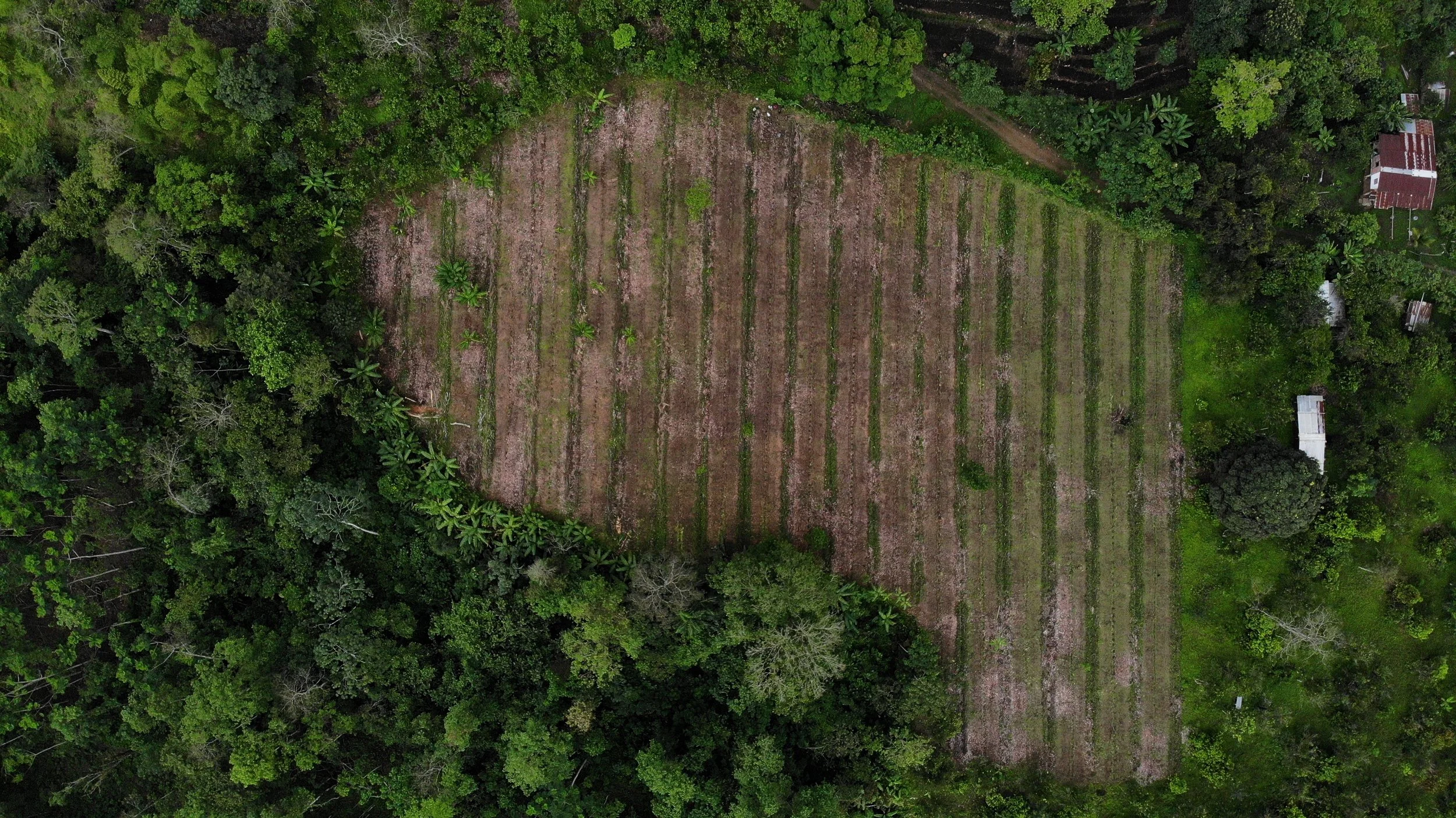Why Syntropic farming?
Syntropic farming began in Brazil drawing from various indigenous practices of regenerative agroforestry alongside the contemporary need to cultivate the same land year in year out. Traditional systems were able to let land lie fallow (uncultivated) due to the natural abundance of forest. We live in a starkly different world now. With only 2% of our local tropical dry forest intact, this system allows us to regenerate our soil and our ecosystem while growing food crops and timber every year on the same land.
You can think of syntropy as the inverse of “entropy.” While entropy is the tendency towards chaos or simplification (think acres and acres of only corn in Iowa), syntropy is the tendency towards increased complexity we see in forests as they mature. Our farm will take 10-12 years to reach the beginning of that “peak” maturity phase, but as time passes, more plants grow and the howlers and other creatures return, there is no way of predicting the upper limits of the ecological complexity that will follow.
Background
After 6 years of earthquake relief, we began to look upstream at the causes of the landslides and economic instability which made the 2016 earthquakes as disastrous as they were. Seeing the overgrazed hills of cow pasture and extensive monocrops of shrimp, bananas and cacao driven by frequently shifting international markets, we saw depleted soils, destroyed habitats and an undiversified economic system setting up its owners for periodic cataclysm. We began our successional agroforestry system in 2022 to create a model for what diversified economic revenue streams, reforestation and soil regeneration can look like bound together in one agroecosystem. Since then we have held workshops, welcomed local farmers, and expanded our agroforestry plots to over 3 hectares from an original 1 with hopes to expand even further!







